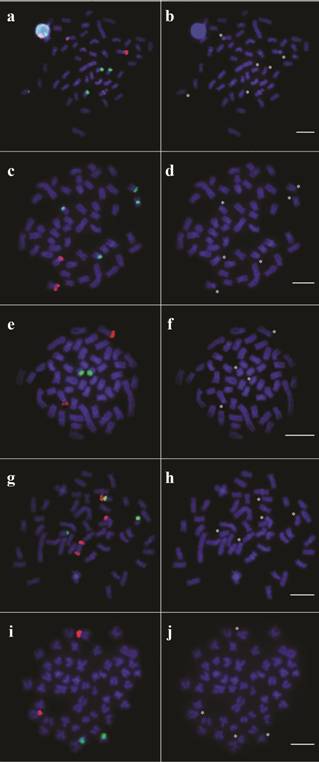ABSTRACT
Characiformes is the most cytogenetically studied group of freshwater Actinopterygii, but karyotypical data of several taxa remain unknown. This is the case of Nematocharax , regarded as a monotypic genus and characterized by marked sexual dimorphism. Therefore, we provide the first cytogenetic report of allopatric populations of Nematocharax venustus based on distinct methods of chromosomal banding and fluorescence in situ hybridization (FISH) with repetitive DNA probes (18S and 5S rDNA). The karyotype macrostructure was conserved in all specimens and populations, independently on sex, since they shared a diploid number (2n) of 50 chromosomes divided into 8m+26sm+14st+2a. The heterochromatin was mainly distributed at pericentromeric regions and base-specific fluorochrome staining revealed a single pair bearing GC-rich sites, coincident with nucleolar organizer regions (NORs). On the other hand, interpopulation variation in both number and position of repetitive sequences was observed, particularly in relation to 5S rDNA. Apparently, the short life cycles and restricted dispersal of small characins, such as N. venustus , might have favored the divergence of repetitive DNA among populations, indicating that this species might encompass populations with distinct evolutionary histories, which has important implications for conservation measures.
Keywords:
18S rDNA; 5S rDNA; Coastal drainages; FISH; Population cytogenetics

 Thumbnail
Thumbnail
 Thumbnail
Thumbnail
 Thumbnail
Thumbnail
 Thumbnail
Thumbnail
 Thumbnail
Thumbnail




